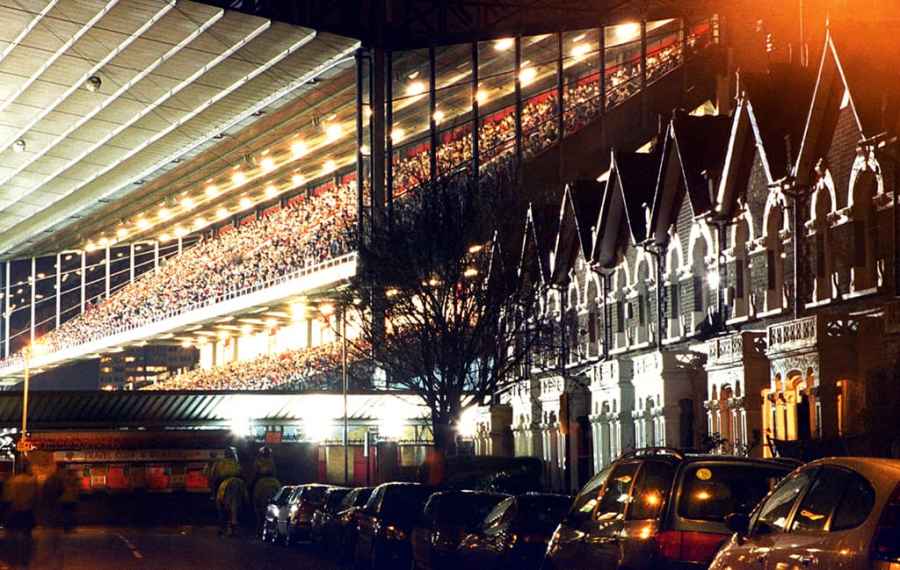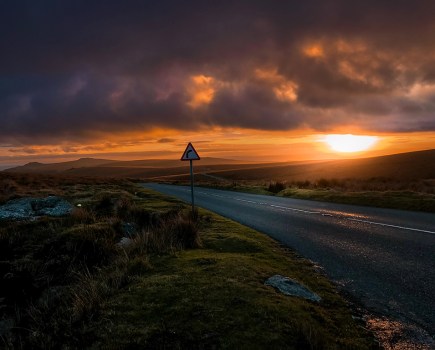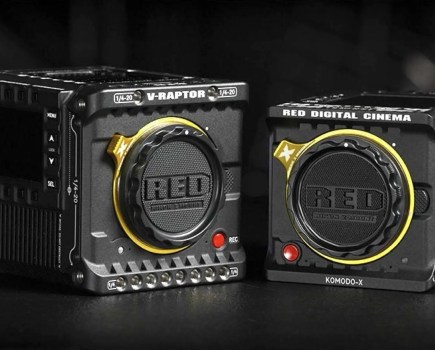What triggered Ian Hughes’s project, Around The Floodlit Grounds, was watching the 1997 film Fever Pitch, based on Nick Hornby’s memoir about his relationship with Arsenal Football Club.
‘There was a scene in that where a boy is being carried on his dad’s shoulders towards Highbury Stadium for a night match. I thought, that would be a good picture to go and take one day,’ explains Hughes. Eight years later, Hughes took that picture.
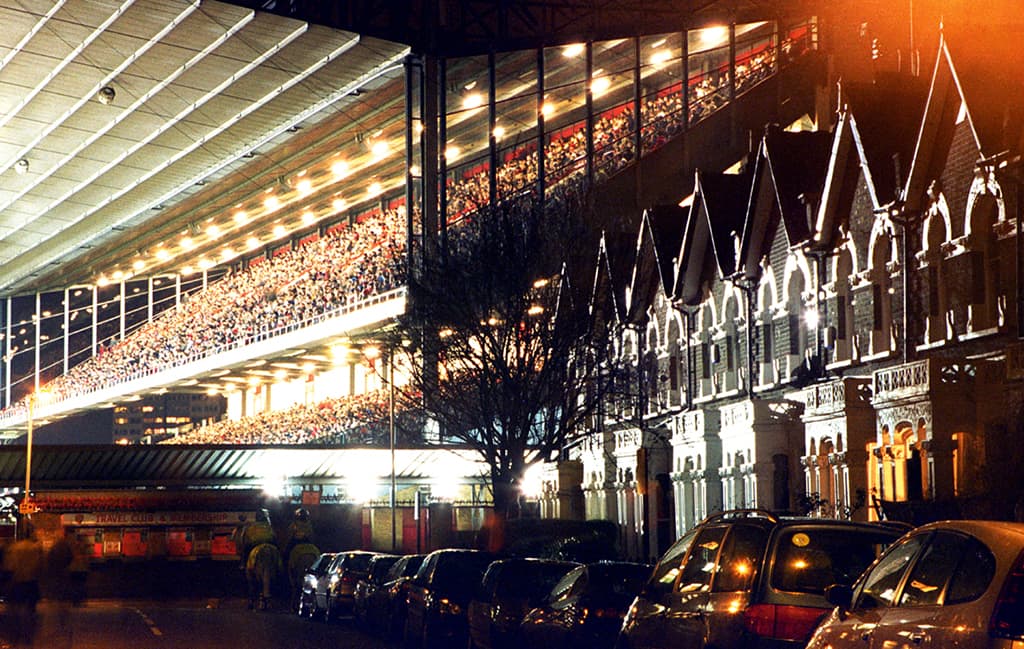
Arsenal, Highbury, 2005
The first floodlit football ground he photographed was in 2004, 160 miles north of Highbury. ‘I just happened to be in Rotherham one night. I saw the stadium from a distance, Millmoor, and took a quick picture from the bridge nearby.
I didn’t really know how to go about it, I just thought it was a spectacle, an interesting thing to capture. I loved the way the floodlights were spilling out, lighting up the surrounding area – there was a big car park nearby, it was quite dramatic lighting. I didn’t know how to go about it so I ended up putting myself in the picture, a long exposure with my tripod. I’m used to having people in my pictures as I’m a street photographer at heart.’
Balancing a day job working for a call centre, over 150 floodlit football grounds have been photographed at night, including all 50 in Sussex where he now lives – a long way from his home town of Neston, in the Wirral, and a long time since the excitement of the night match was embedded on two mile walks from his grandad’s house to watch their beloved Everton play at Goodison Park.
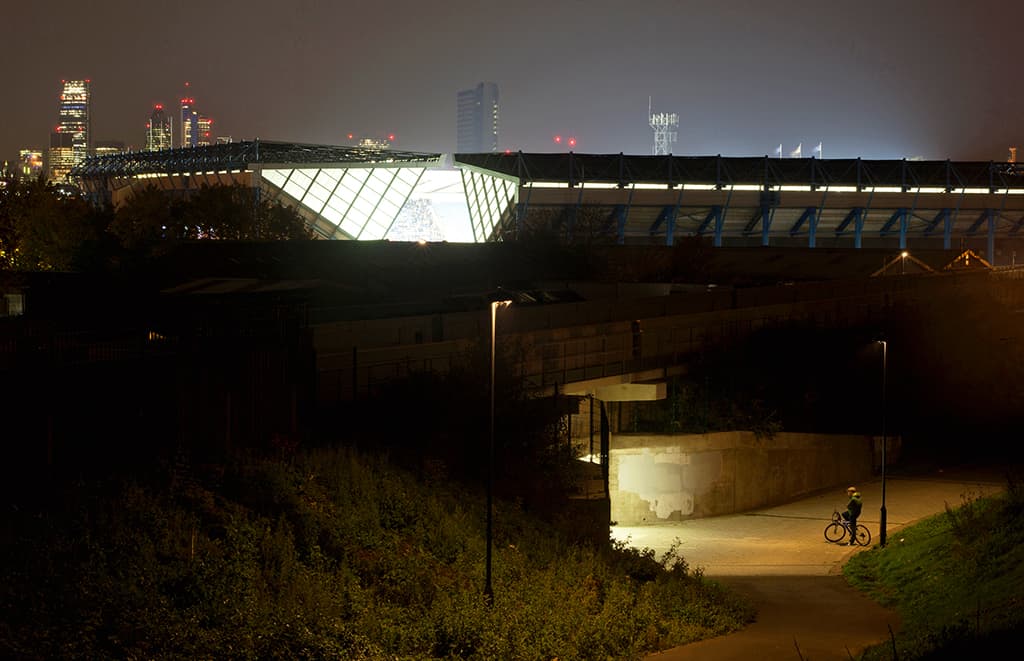
Milwall, The New Den, 2015
Confidence
Sustaining a project for 16 years can be tough. When Hughes was studying for a degree in editorial photography, the Magnum Photos photographer and lecturer at Brighton University, Mark Power, encouraged him. ‘He’d been thinking of doing a similar project or series of pictures of football grounds from a distance, so I thought if that’s good enough for him, it’s good enough for me.’
Another confidence boost came from a less likely source. ‘Around 2012 I did a talk at Brighton & Hove Camera Club. There wasn’t much interest around my floodlit football ground pictures at the time. I did the talk, mostly showing my street photography; there wasn’t a great reaction, I heard somebody snoring. After the tea break, I started showing the football ground pictures and then everybody came to life, they encouraged me. That one night kept it going – it could have all fizzled out.’
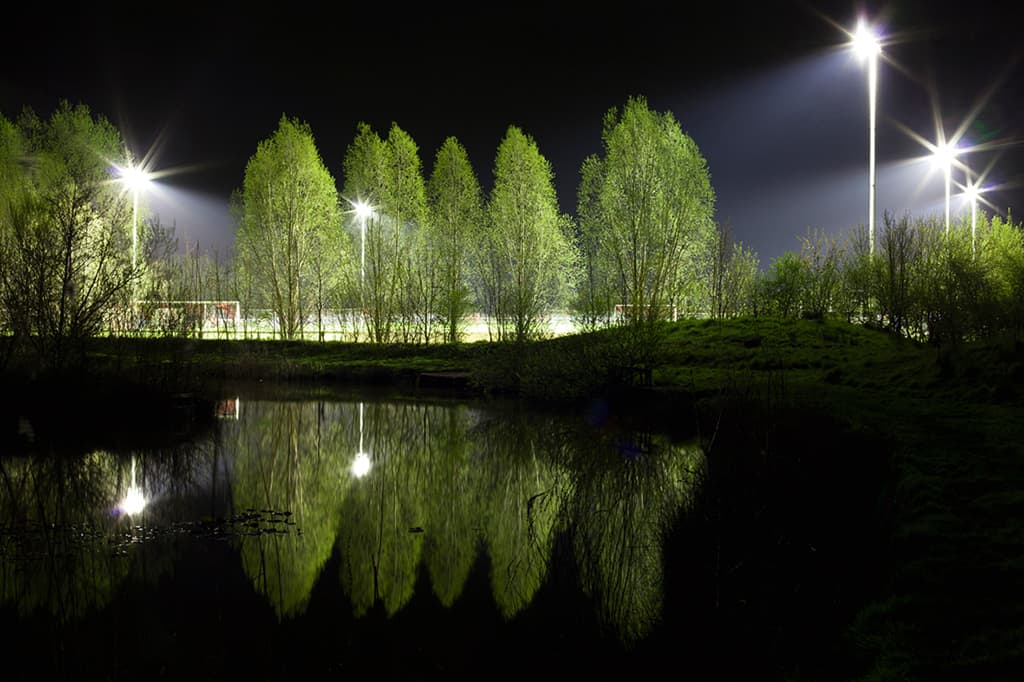
Bexhill United, The Polegrove, 2011
As the match referee blows his whistle, Hughes begins his photography, circulating the ground looking for the best angle to shoot from. He started using a Mamiya 7 medium format film camera. For the last ten years, a Canon EOS 5D Mark II with 28mm, 50mm and 100-300mm zoom lens. Each exposure is around 30 seconds, at f/22 if possible. Post-production is kept to a minimum.
Dealing with floodlights
The biggest challenge is to avoid shooting direct into floodlights. ‘Quite often it’s a case of finding a shadow to point the camera from. If you stand behind a wall or tree, it might not look like a good picture straight away but being a long exposure, the light can do funny things. Long exposure photography can bring up different kinds of interesting effects that you don’t realise with the naked eye.’
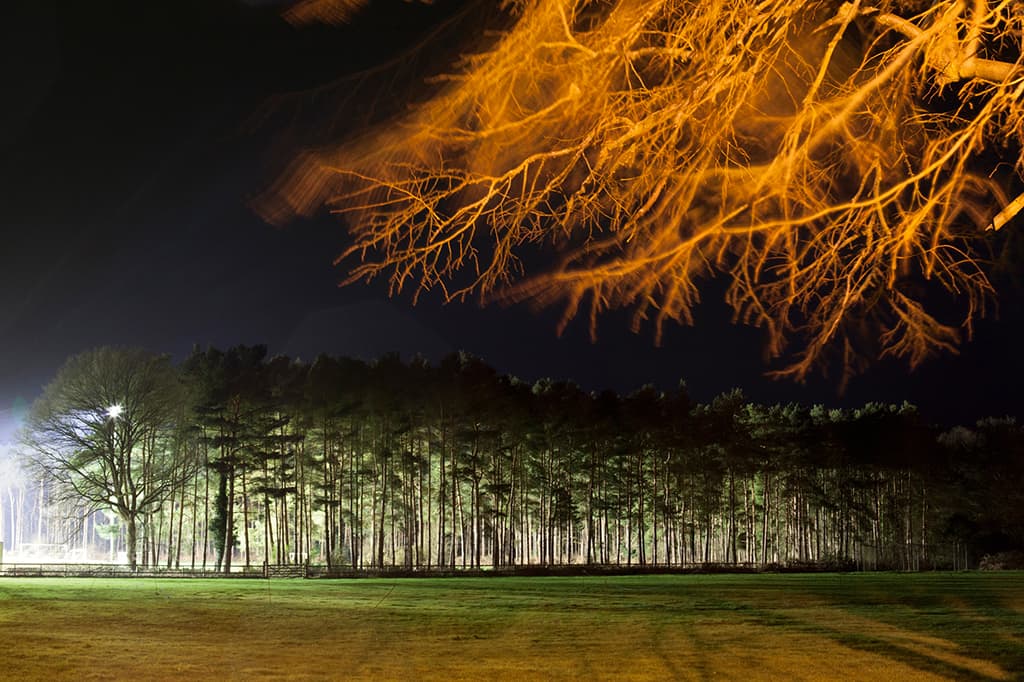
Loxwood, Plaistow Road, 2016
The pictures are often taken in a dark alley or outside a suburban house. ‘I do get a lot of curiosity from people but rarely a problem. If I found somebody stood on my doorstep with a tripod, hanging around for a few minutes, I’d be suspicious. People come up and ask what I’m doing and I try to explain. It’s quite difficult, you’re photographing a football match and you’re half a mile down the road from where it’s happening.
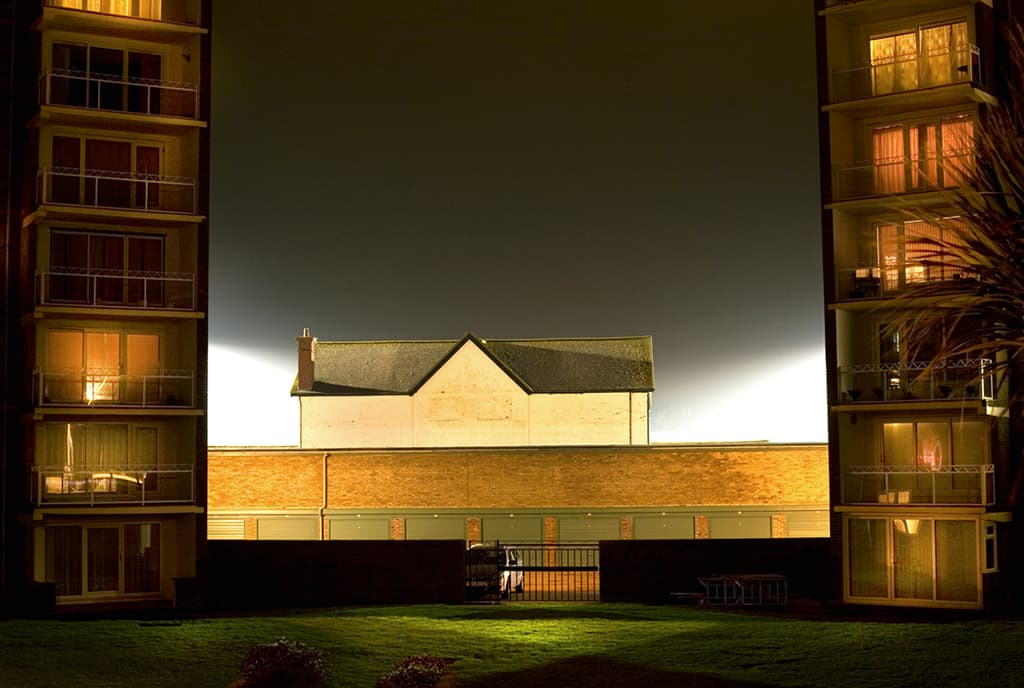
Bexhill United, The Polegrove, 2011
A few people say, “I know somebody inside who can let you in”. I explain I’m not really interested in the action, just trying to capture the ambience of the floodlights on the surrounding streets. I’ve had a few stop and searches from police!’ he adds.
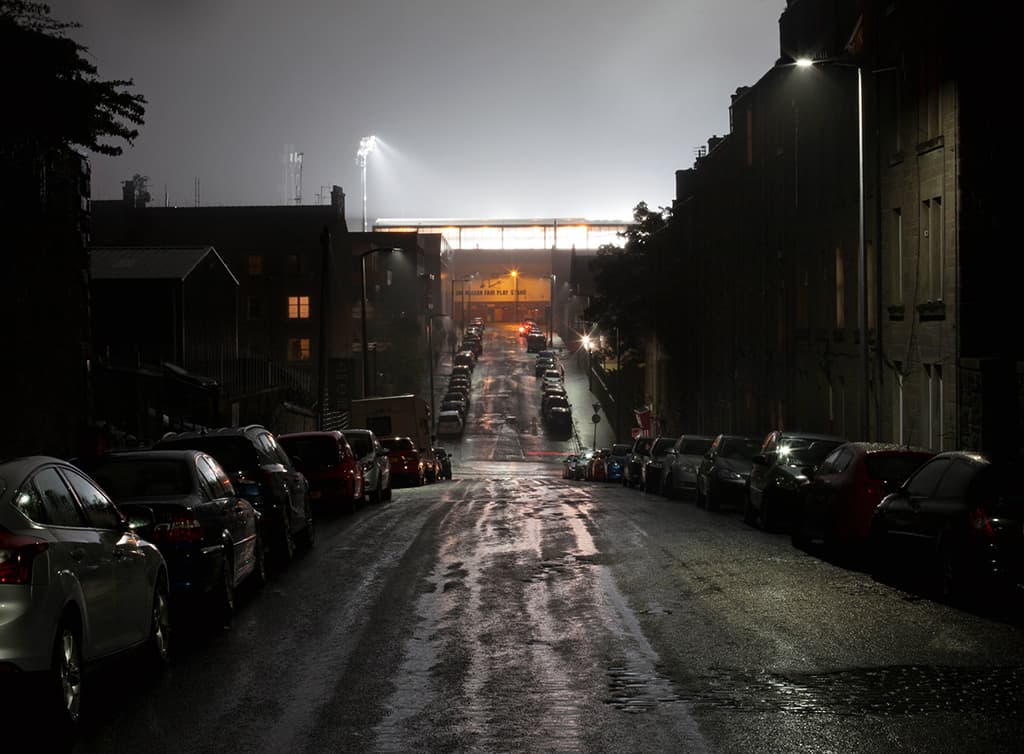
Dundee United, Tannadice, 2019
The images reach beyond the football fan to show something familiar, transformed by floodlight in a compelling way. As a kid, Hughes witnessed Alsation dogs tear into hooligans at Chester. As a teenager, missiles smashed through a coach window, narrowly missing his head, on an away-day to Manchester United. It’s perhaps not surprising that he has applied a more tranquil approach to his reportage.
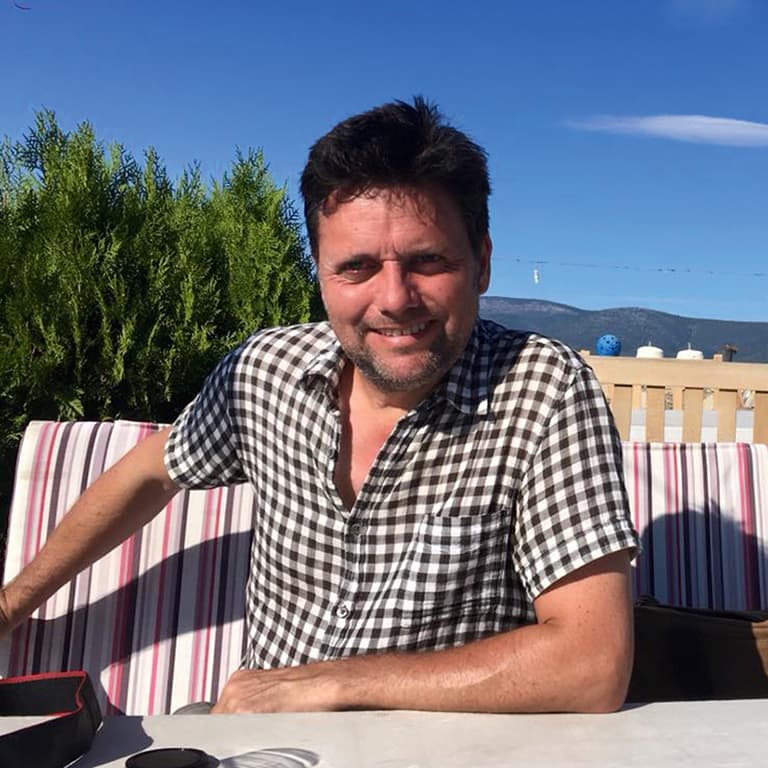
Ian Hughes
Ian studied photography at Wirral college. Taught by Tom Wood he developed a love for street photography. He was a cruise ship photographer in Miami for eight years – Love Boat Rejects, unsold pictures he collected, were exhibited worldwide decades later. In 2006 he gained a degree in editorial photography. He was a finalist in the 2012 International Street Photographer Awards and was a winner in the 2015 LensCulture Emerging Talent Awards

